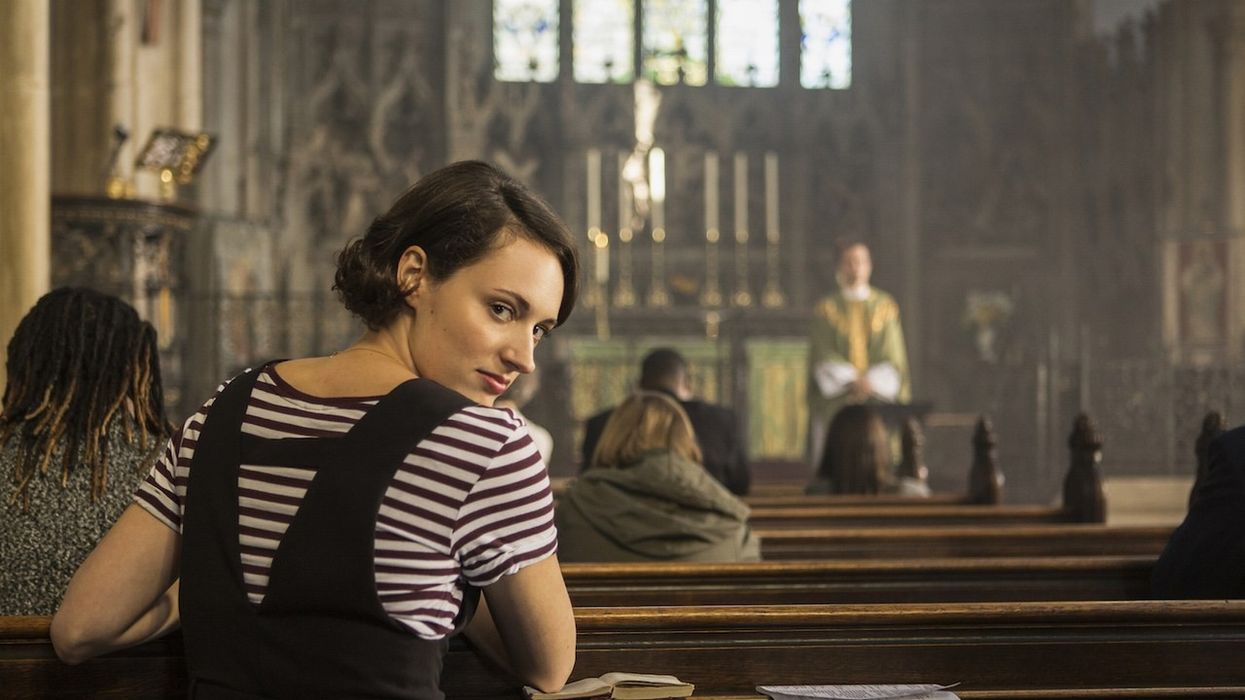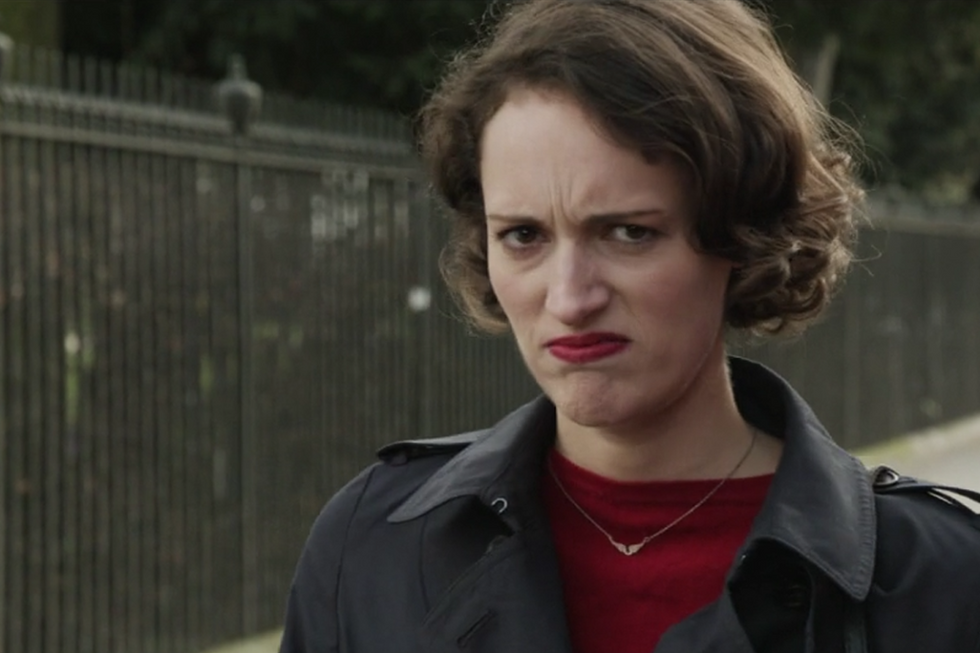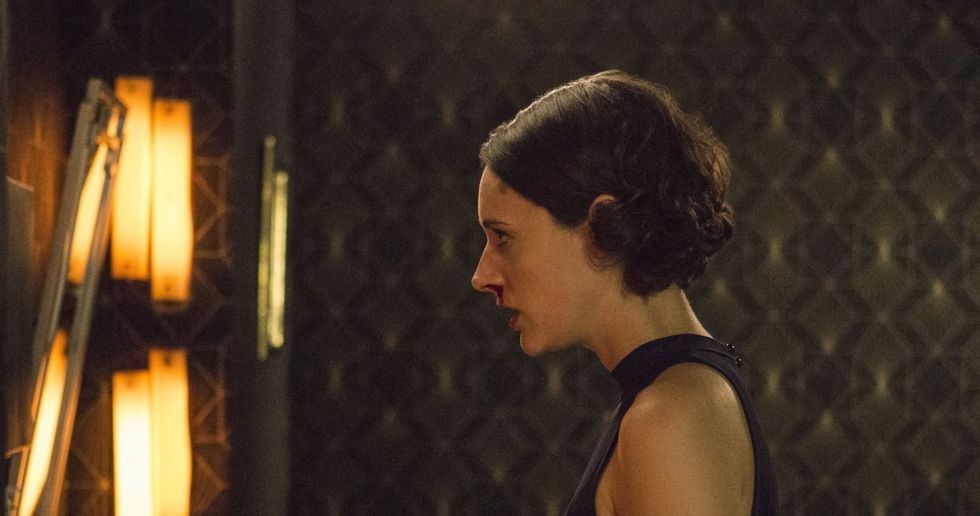This Video Essay on 'Fleabag' Will Make You an Expert on Perspective
Can 'Fleabag' teach aspiring storytellers about how to communicate emotions and humor through perspective?

If you haven't seen Fleabag, the Amazon/BBC series following a young woman living in London and struggling to get her life in order -- what's wrong with you?!
You're really missing out!
Not only is the comedy/drama one of the best shows you'll see on TV this year, but writer/star Phoebe Waller-Bridge has pushed the boundaries of creative storytelling over the course of the show's two seasons. It's absolutely masterful work.
This video essay from Skip Intro explores one of the show's most unique elements: how perspective is used as a storytelling device.
Watch the video below.
Let's break down some of the key points here.
Giving the show a point of view
Fleabag is a world seen through the main character's eyes. The story is experienced through her subjective point of view. It's her voice and her experiences that lend the show humor and emotion. And even though she's not perfect, the audience is immediately on her side because we're living everything alongside her.
As the video points out, sometimes other shows choose to incorporate multiple points of view, utilizing a wide cast. Imagine if Fleabag had used Claire (Sian Clifford), Boo (Jenny Rainsford), or Martin (Brett Gelman) as POV characters? It wouldn't be the same at all.
Staying with Waller-Bridge's Fleabag also means that the character can hide things from the audience as she does throughout season one. Sure, she has some flashes to traumatic moments, but then she buries them deep, purposefully not showing us until she has to face her past. It's a great storytelling method to keep the audience guessing.

Breaking the fourth wall
One storytelling technique that makes Fleabag stand out from its first scene is the lead character's ability to communicate directly with the audience. It works to effectively share what she's thinking in any given situation, even if she's not giving that same information to other characters in the scene. It allows her to be both vulnerable and funny.
She does it so often, and so smartly, that some fans have even ranked the best moments.
This is not a new filmmaking trick. It's a classic way to convey information and make a story accessible. But if you want to use it too, you'd better know why exactly you're doing it.
Beyond being hilarious and often surprising, this method serves to bring the audience into the story, almost as a separate character. In Fleabag's case, it might make you wonder, "Why is she telling us these things? Is she relying on us to confirm the version of herself she's projecting to the world?"
Season two of the show goes even further with the idea of perspective and breaking the fourth wall. Now, whenever Fleabag looks at us, the Priest (Andrew Scott) notices and comments on it.
This change is such a delightful surprise in the second season and adds a great deal to her interactions with him and the audience. What does it actually mean in her world to communicate with the unseen audience, and how can he see her do it? Is he viewing her in a way that no one else does?
And then, of course, there are the final, heartbreaking moments of the show, when she finally leaves us behind and moves on. She doesn't need us, or an emotional crutch, anymore.

Perspective and structure in Fleabag
The video essay takes a look at story structure as it relates to this show.
Most writers will know about the traditional story arc (exposition, rising action, climax, resolution). It typically looks like -- you guessed it -- a big arc.
Fleabag is a serialized series. That means one major story plays out over the course of a season. As such, Fleabag has a structure that follows this traditional story arc. But it also means that each episode in the series is like a chapter in this big arc.
In addition, each episode also contains its own mini-arc. The audience follows the character through the chapter of rising action and conflict before the episode is finished. Every episode has a beginning, middle, and end.
The video theorizes that each time Fleabag looks at the camera, she is actually adding another dimension to the narrative arc that we know. Her glances to the audience are little moments that take the audience to a new emotional point, one that might exist in the three-dimensional space along each episode's arc. They can be high or low points, but most of all, the moments teach us something new about her.
It's a really interesting idea.

The video essay closes with Waller-Bridge's thoughts on using the television format as a place for fun and experimentation, and she's obviously done a lot of new things with storytelling in Fleabag. But other writers, directors, and creators can do the same in any platform of their choice!
As always, remember that you shouldn't be messing around with gimmicks. If you break the fourth wall with a good emotional foundation in place and compelling characters, that's when those moments will really land.
What's next? Continue exploring point of view and narrative structure
Check out how The Big Short broke the fourth wall, as well as Jonathan Demme. Examine how perspective is used in cinema. Learn four kinds of POV shots and how you can shoot some of them.
We've also got the six emotional arcs of storytelling and a story map template to plot out your own work!
Have you seen Fleabag? What are some of your favorite moments from the series? Let us know in the comments!
Source: Skip Intro
















